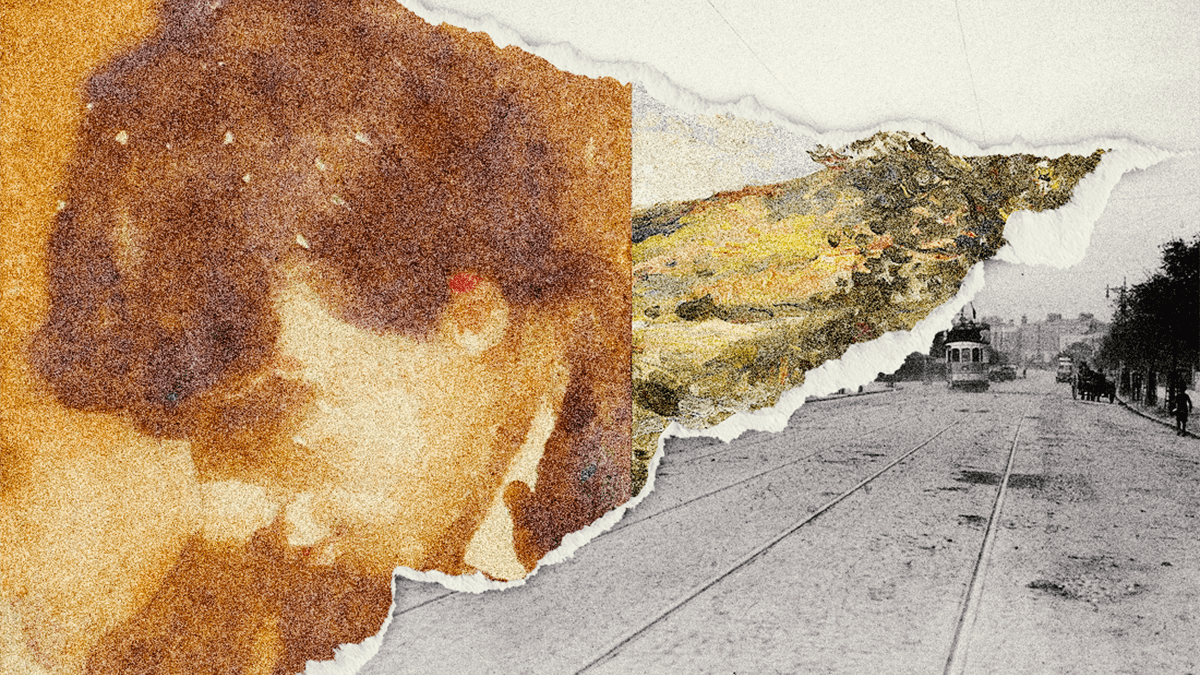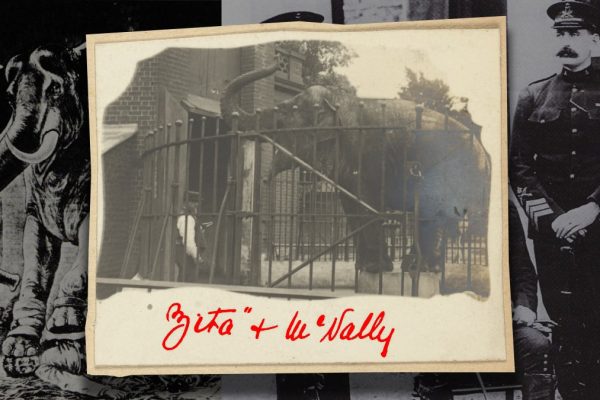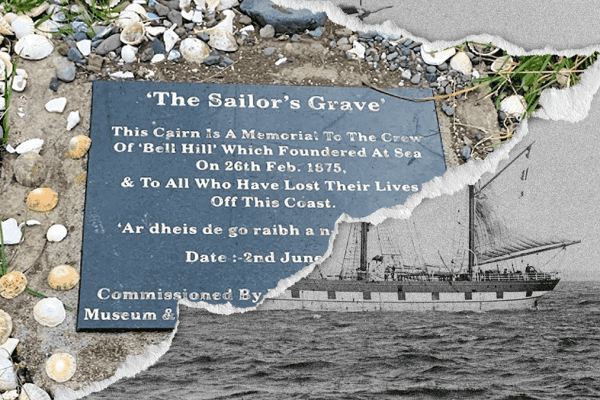Francis Joseph O’Donohoe was born in Dublin on April 13th 1878 to William O’Donohoe and Ellen Bourke.[1] Born at 40 Cuffe Street, the family would later move towards the Liffey to Essex Quay, where William would ply his trade as a jeweller and watchmaker.[2] These artisanal qualities seem to have been inherited by the young Francis, who is first recorded as entering the Dublin Metropolitan School of Art (now the National College of Art and Design) at the tender age of 13.[3] Here he became acquainted with William Orpen who would remain a lifelong friend, with Francis being the subject of Orpen’s portraits. Orpen would later remark that O’Donohoe had the “endearing Dublin propensity for cutting people down to size”.[4]
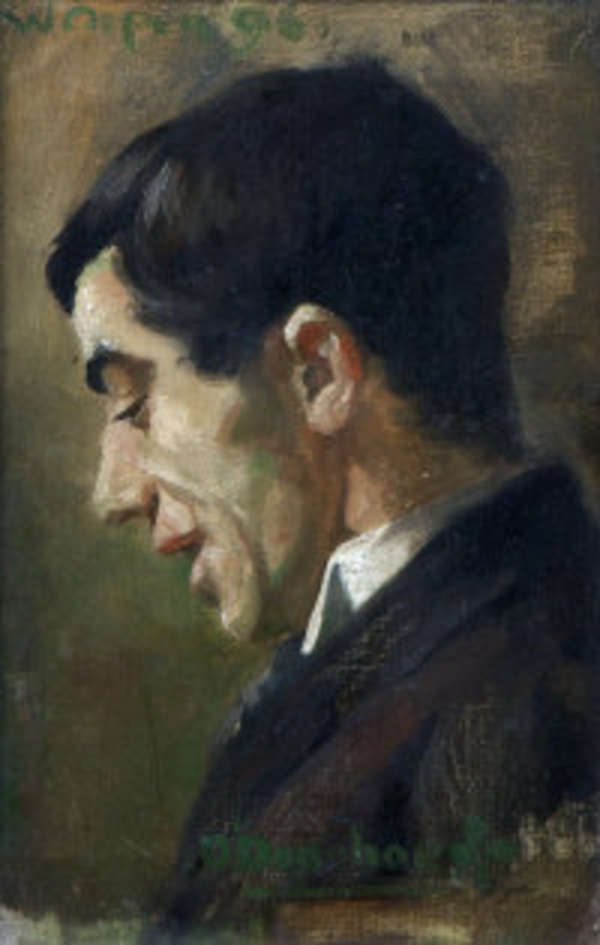
At the turn of the century, while Orpen went to London to continue his studies, Francis, following the well-trodden path of countless other artists, headed to Paris. He opted for the Académie Julian, studying under the eminent Jean-Joseph Benjamin-Constant.[5] This institute was a popular choice for foreigners, as the competing (and at the time more renowned) École des Beaux-Arts had prospective students sit a stringent French language exam.[6]
Upon his return to his home country, O’Donohoe painted a variety of portraits and landscapes, including his mother and sister as subjects and also the then-rural scenes of Tallaght and Rathfarnham. This type of work didn’t yield much in the way of income, with Francis finding his niche in painting ecclesiastical work for Roman Catholic churches. The first of these commissions was the Stations of the Cross in Screen, Wexford. Subsequent to this was a work depicting the Most Sacred Heart of Jesus, hanging over the High Altar of St. Brendan’s Cathedral in Loughrea, a bastion of the Irish Arts and Crafts movement that also houses works by Evie Hone, Sarah Purser and John Hughes, amongst others.
His earnings were supplemented by teaching at the Technical School on Kevin Street in his home city.[7] In May 1911, Francis was elected an Associate Royal Hibernian Academy member – one of the highest honours that can be bestowed on an artist in Ireland.[8] Though this success would be short lived.
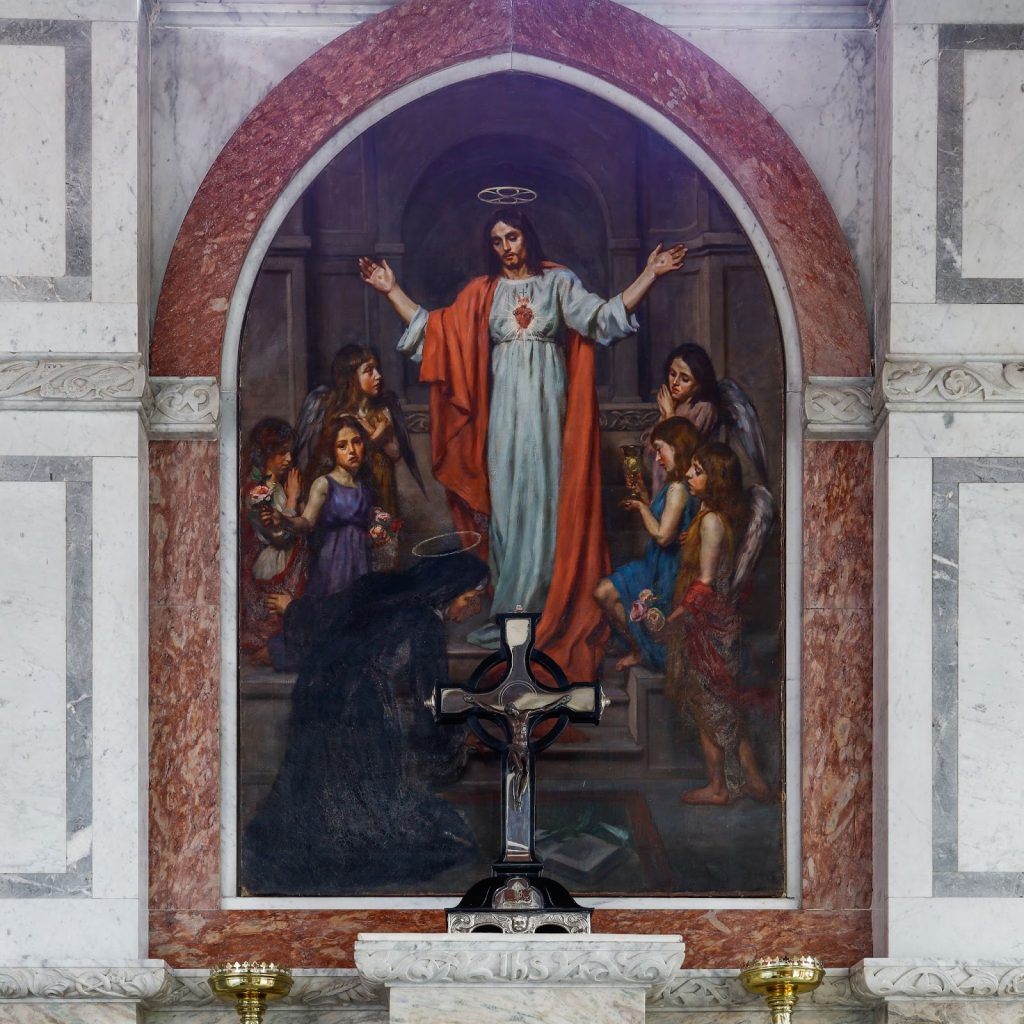
Seven months later, on Saturday, December 23 1911, Francis left his home at 19 Essex Quay at 4:30 pm to buy a Christmas present for his mother. While in the Parnell Street area, he ran into a friend, Joseph Scott, who was accompanied by a few others. Together they went to Mooney’s for a drink. Once they were finished there they decided to cross the Liffey to continue their revelry in Lindsay’s pub at 25 Dawson Street. Scott was in possession of a car which he obtained from Darracq, his workplace where he plied his trade as a mechanic. The seven men piled into the vehicle and proceeded to their next drinking spot.
After a round, they then drove onwards to drop one of the group members, Michael Shortall, home to his residence in Shankill. The car trundled by Stephen’s Green and up Leeson Street before reaching the Morehampton Road. Deteriorating weather conditions led to heavy sleet as Scott’s car followed a southbound tram at the Royal Hospital. Deciding to overtake the tram, Scott steered the car onto the road.
However, in the midst of the sleet, he did not see a horse-drawn bread van coming in the opposite direction. Driving at 15 miles an hour (24 km/h), Scott crashed into the van, knocking the horse to the ground along with its driver, James Connell. Connell escaped with minor injuries while Scott was flung out of the car and injured his head. The other passengers of the car were unharmed, except for one, whose situation was much more dire. O’Donohoe was found lying on the floor of the car, covered in blood. Due to the sudden impact, he was flung forward as the windscreen smashed, the glass cutting open his throat.[9]
Two of his fellow passengers carried him to the side of the road and a doctor attended the scene. The injured Scott drove the group to the Royal Dublin Hospital on Baggot Street in the mangled car. O’Donohoe was immediately administered oxygen and a tracheotomy was performed in an attempt to clear his windpipe.[10] But it was too late. Francis had succumbed to the massive blood loss inflicted from his injuries and died.[11] He was buried four days later, with the funeral taking place at the Church of St. Michael and John on Lower Exchange Street – the street parallel to where he grew up on Essex Quay. Mourners included fellow Irish artists Joseph Malachy Kavanagh and Oliver Sheppard. O’Donohoe was then buried in the family plot in Glasnevin Cemetery.[7]
On St. Stephen’s Day, an inquest was held at the hospital, detailing the events that had led to O’Donohoe’s death two days prior. Attendees included a representative from the Darracq Motor Car Company. He stated that Joseph Scott did not have permission to take the car out on that day.[12]
Born Patrick Joseph Scott, he was the son of Anthony Scott, a renowned architect whose projects included a number of Carnegie libraries, Roman Catholic churches and social housing projects around Ireland.[13] The trial centred around Scott’s ability to drive that night and whether he was negligent or if the accident was due to the inclement weather, causing him to skid.
One of the other passengers in the car testified that all he had drunk was “two bottles of stout”, while an Inspector from the Dublin Metropolitan Police that visited Scott in hospital posited that he was drunk during their interaction. Judge William Huston Dodd rejected that notion, labelling Scott as the son of “one of the most esteemed of Dublin citizens”.[14] It was at this point that O’Donohoe’s father, clad in all black, stood up and pointed to the dock, shouting “That man has been a drunkard all his life, and their drink has killed my poor son” before being subsequently removed from the courtroom.[9]
The jury ultimately found Scott guilty of manslaughter and he was sentenced to two months imprisonment with hard labour.[14] He immediately served his sentence in Mountjoy Prison before being released in April of 1912.[15] Scott would spend the first anniversary of Francis O’Donohoe’s death on the open ocean, bound for Australia on a first-class ticket that was presumably subsidised by his family.[16] He disembarked at Sydney in early January where he would eventually spend the rest of his days, dying in 1944.[17]
A few weeks after the incident, a posthumous exhibition of O’Donohoe’s works was opened by the Countess of Fingall, Elizabeth Burke-Plunkett, at the Irish Art Companions gallery at 28 Clare Street in Dublin. Running for two weeks, the exhibition contained roughly 200 works spanning oil portraits, watercolours and sketches. Visitors included playwright Edward Martyn and Joseph Nannetti, MP and former Lord Mayor of Dublin.[18]
As the decades rolled on to the present day, the non-ecclesiastical works of Francis O’Donohoe are seemingly all in private collections. At the time of writing, the most recent work sold was a drawing of his sister and nephew that went under the hammer in 2018 for €150,[19] demonstrating the echoes that still abound from a promising career tragically cut short.
References
- Department of Tourism, Culture, Arts, Gaeltacht, Sport and Media. “Civil Records – Births in South Dublin District.” Irish Genealogy, n.d. https://civilrecords.irishgenealogy.ie/churchrecords/images/birth_returns/births_1878/02966/2086774.pdf
- “1901 Census of Ireland”, County: Dublin, DED: South City, Townland/Street: Essex Quay, House 15
https://www.census.nationalarchives.ie/reels/nai003723395/ - Dublin Metropolitan School of Art. Metropolitan School of Art Index Register Session 1891-92, Oct 1891 – July 1892, 327.
- Bruce Arnold and Sir William Orpen, Orpen, Mirror to an Age (Jonathan Cape, 1981), 31–32.
- “O’Donahoe – Academie Julian,” Academie Julian, n.d., https://web.archive.org/web/20201105022125/https://sites.google.com/site/academiejulian/o/o-donahoe.
- Ian Chilvers, “académie,” in The Oxford Dictionary of Art and Artists (New York: Oxford University Press, 2009).
- “Funeral of Mr. F. O’Donohoe,” Irish Independent, December 28, 1911, 6.
- “Mr. Francis O’Donohoe, A.R.H.A.,” The Kilkenny Moderator and Leinster Advertiser, May 13, 1911, 5.
- “An Artist’s Tragic Death,” Belfast Newsletter, February 8, 1912, 7.
- “Fatal Motor Smash,” Irish Independent, January 6, 1912, 7.
- Department of Tourism, Culture, Arts, Gaeltacht, Sport and Media. “Civil Records – Deaths in South Dublin District.” Irish Genealogy, n.d. https://civilrecords.irishgenealogy.ie/churchrecords/images/deaths_returns/deaths_1911/05382/4501886.pdf
- “Fatal Motor Accident in Dublin: The Inquest,” The Irish Times, December 27, 1911, 7.
- Department of Tourism, Culture, Arts, Gaeltacht, Sport and Media. “Civil Records – Births in Navan District.” Irish Genealogy, n.d. https://civilrecords.irishgenealogy.ie/churchrecords/images/birth_returns/births_1886/02583/1954762.pdf
- “Artist’s Death,” Irish Independent, February 8, 1912, 6.
- Irish Prison Registers 1790-1924, 1/43/9, 2.
- “UK, Passenger Lists Leaving UK 1890-1960.” Database and images. Find My Past.
- “New South Wales Deaths 1788-1945.” Database and images. Find My Past.
- “Irish Art Gallery: The O’Donohoe Pictures,” Freeman’s Journal, February 5, 1912, 4.
- Whyte’s, “MARY JOSEPHINE FENNING and SON SEAMUS, 1907 by Francis J. O’Donohoe ARHA (1878-1911) ARHA (1878-1911) at Whyte’s Auctions | Whyte’s – Irish Art & Collectibles,” Whyte’s, July 9, 2018, https://www.whytes.ie/art/mary-josephine-fenning-and-son-seamus-1907/164862/
